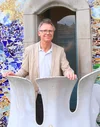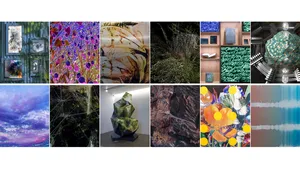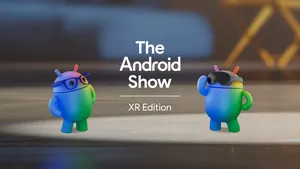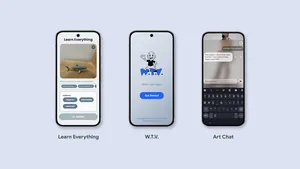How machine learning revived long lost masterpieces by Klimt
Few artists enjoy such worldwide fame as Gustav Klimt. The new Google Arts & Culture online retrospective "Klimt vs. Klimt - The Man of Contradictions" puts the spotlight on the artist's eclectic work and life. A Machine Learning experiment recolored photographs of lost Klimt paintings, while a “Pocket Gallery” brings some of his most iconic works into your living room in augmented reality and 3D. Together with more than 120 stories about his art and personality, a virtual tour of his studio, and many more highlights from the collections of over 30 cultural institutions around the world, "Klimt vs. Klimt" forms one of the most comprehensive online experiences about the artist.
Klimt’s legacy poses many unsolved questions, not least due to the fact that approximately 20% of his artworks were lost over the course of history. Among the most prominent and painful losses are the so-called Faculty Paintings, created on behalf of the University of Vienna and rejected by the latter for being overly critical towards science. In 1945, only days before the Second World War ended, the paintings were lost to a fire at Immendorf Castle in Austria. What these major works looked like could only be guessed at from black and white photographs taken in the early 1900s, unable were they to convey the magic that makes Klimt’s artworks so captivating — the bold colours, the revolutionary approach to textures, the shocking directness of his figures. Until today.
Using the opportunities offered by machine learning, enhanced by the knowledge of internationally renowned Klimt expert and curator at the Belvedere, Dr. Franz Smola, the team at the Google Arts & Culture Lab was able to reconstruct the colours that Klimt might have used for the Faculty Paintings, thus restoring them to their fully colored beauty. For the first time in 70 years, people can experience his artworks in the colors he might have used.
Discover how the Faculty Paintings could be recolored combining Machine Learning and expert knowledge.
Curator Dr. Franz Smola and engineer Emil Wallner working at the Google Arts & Culture Lab.
Explore the recolored photo of Klimt’s Faculty Painting “Jurisprudence”.
The recolored photo of Klimt’s Faculty Painting “Philosophy”.
In 1928 the Faculty Paintings were on display at the 99th exhibition of the Vienna Secession.
Experience the art of Klimt in new ways online
The paintings are the true centerpiece of “Klimt vs. Klimt”. The retrospective brings together more than 120 of the artist’s most famous masterpieces, as well as lesser known works, and assembles an expertly curated selection in an immersive Pocket Gallery that you can experience in augmented reality on mobile or in 3D on web. This was made possible thanks to a collaboration between Google Arts & Culture and over 30 partners and institutions - with the Belvedere, the Albertina, the Klimt Foundation, the Neue Galerie New York and the Metropolitan Museum of Arts among them. Over 60 masterworks by Klimt have also been captured in ultra high resolution with Google’s Art Camera. Come in closer to see “The Kiss” like never before!
An AR/3D gallery allows to get fully immersed in Gustav Klimt’s work for a unique exhibition experience.
In more than 120 stories, Klimt lovers and newcomers can get familiar with his art, including his many portraits.
They can stroll through the painter’s final studio and trace how Klimt, himself rather shy, became the pioneer of the revolutionary Secession art movement.
Discover how the man who is said to have had numerous affairs stayed true to his lifelong companion Emilie Flöge.
Meet the expert — Dr. Franz Smola
While creating “Klimt vs. Klimt” the Google Arts & Culture team was advised and guided by Dr. Franz Smola, curator at the Belvedere and acknowledged around the world as one of the foremost Klimt experts. He shared some of his thoughts on working on the project:
Why are Klimt’s Faculty Paintings so important?
Klimt´s three Faculty Paintings were among the largest artworks Klimt ever created and in the field of Symbolist painting they represent Klimt’s masterpieces.
What do you think about the recolored versions?
The colors were essential for the overwhelming effect of these paintings, and they caused quite a stir among Klimt´s contemporaries. Therefore the reconstruction of the colors is synonymous with recognizing the true value and significance of these outstanding artworks.
Is there something the digital presentation adds to how Klimt and his artworks can be perceived?
I am deeply impressed by the fantastic images taken with Google’s Art Camera. They allow you to really explore a work of art, to jump into its texture and color application and to discover every detail in the easiest way possible. I also like how technology allows ideas to come to life that have always been merely hypothetical — I am thinking of the Pocket Gallery we created, which contains a highlight selection of Klimt’s paintings including some of which were lost.
If Klimt was still alive - how do you think he would engage with digital technologies?
Klimt was a highly visual figure. He rarely commented on his work, rather inviting people to look at the work alone and draw their own conclusions. The “Klimt vs. Klimt” project primarily uses visual, non-verbal tools to convey Klimt’s work, which is very much in line with Klimt’s character. Klimt liked to lead a rather secluded life within the walls of his studio, to which only a few had access. I am certain he would have liked the idea of jumping from this remote and quiet place into the World Wide Web, having access to millions of artworks and seeing his art distributed and communicated around the world.
To explore “Klimt vs. Klimt - The Man of Contradictions” visit g.co/klimtvsklimt or download the free Google Arts & Culture app for iOS or Android.








